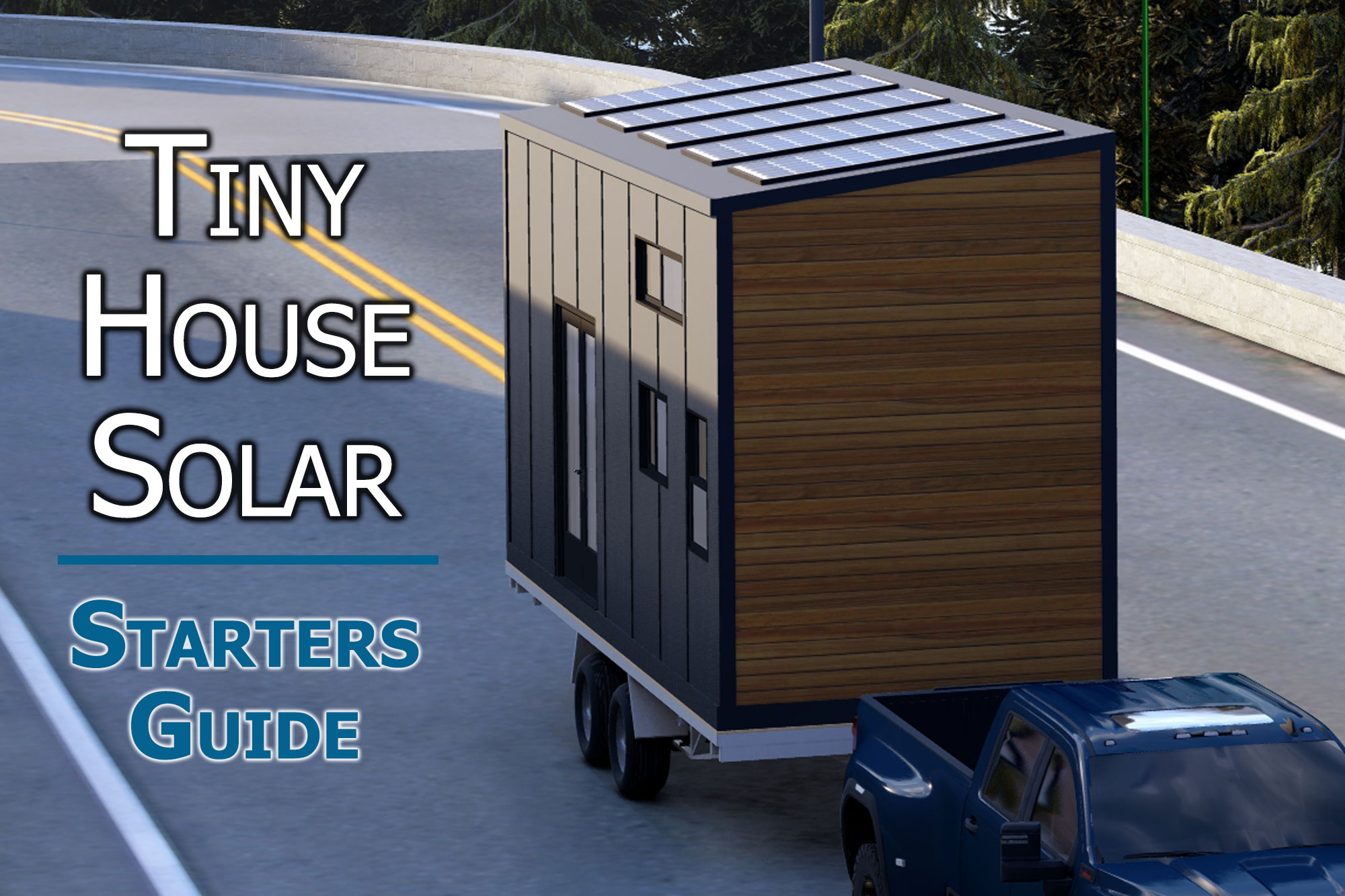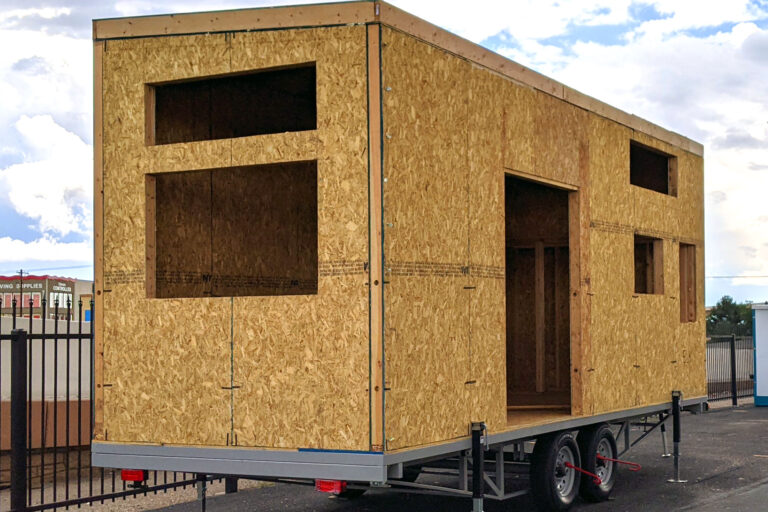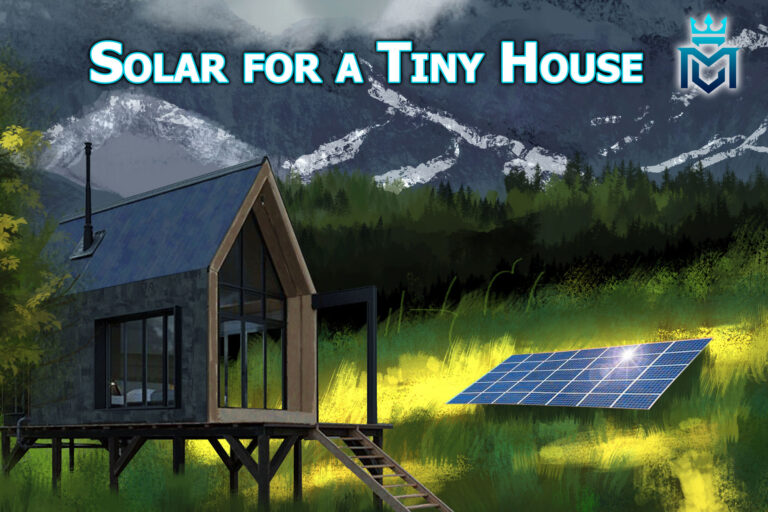Solar for a Tiny House: Starters Guide
As Americans downsize their living space all across the country, two trends in homeownership collide — tiny houses and solar power. Some 60% of Americans living in homes of 2,000 square feet or more say they would like to downsize. This trend is fueled by high property taxes, wage stagnation, and the availability of an off-the-grid property. Solar for a tiny house allows the owner to pursue property with less or no utility service in a location that will enable you to maximize the outside space without neighbors cramping the usage of your outdoor living space.
Also, solar power is inexpensive because the cost of powering a tiny home, compared to a conventional home of 1,600 square feet or more, is much lower.
In the following article, we’ll discuss the benefits of solar panels on a tiny home and how solar electricity could open up a new realm of living possibilities.
Why a Tiny House?
Most realtors consider a tiny house as a residence of 400 square feet or less. These small units are cheaper to construct, are taxed less, and require less land.
Also, since many of these homes are built on towable trailers, you can transport your tiny house to other locations. Transporting a tiny home over a long distance can be difficult because the home is usually built for habitation, not mobility. Still, if the owner is careful and mindful of the limitations of the structure, then you can transport the home to a variety of locations.
While the space may seem spartan from the outside, with the money that people save on square footage they can pour into high-end finishes, space-saving conveniences, and a tiny home solar panel system.
Furthermore, with the money you save, you can pay off debt, save for retirement, and travel debt-free.
Since the domiciles are more diminutive and considered non-permanent in many cases, your property taxes will be considerably less for a tiny home.
Solar Panel Basics
Solar panels are usually made of silicone and collect energy from the sun. Photons make up the bulk of this radiant energy. When the photons strike the panel, a chemical and physical reaction takes place that jars electrons loose.
As they try to move from the positive to negative sides of the panel, these electrons are collected through a wire mesh. These gathered electrons form an electrical current.
This initial electricity is called direct current and is not suitable to power the home. Instead, you need to convert the DC electricity into alternating current by using a piece of equipment dubbed an inverter.
Once the electricity is converted to AC, it flows into a meter, a battery, or directly into the fusebox of the home.
Most solar systems have a battery for storage and power usage during the evenings. If your home is connected to the utility grid, and you are generating more energy than you need, you will get credit (in many states) for the extra power.
These credits are called net metering.
However, since many tiny homes are off the grid, it is vital to have energy-efficient appliances, suitable battery storage, or a backup power generator for emergency usage.
Solar for a Tiny House Pros
The typical home in America uses about 30 KiloWatts a day. Your tiny house uses just 3. So, there’s a lot of potential to cover your entire energy usage by going solar.
As you choose the fixtures for your tiny home, make sure to zero in on appliances, lighting, and chargers that maximize energy efficiency. Also, put your heating and hot water on propane or natural gas to not tax your solar system.
With a solar system in place, you can place your tiny house almost anywhere. Also, you’ll cut down your carbon footprint and help the environment.
The inverter and battery system are relatively easy to set up and, like other appliances in your tiny home, are scaled-down in size. This makes the whole unit affordable and compact.
Tiny House Cons
There are some issues that you’ll need to keep in mind as you plot your solar power system for your tiny home. First, your roof is significantly smaller than your typical home.
Your roof system on an average American home has upwards of 20 panels. On a tiny house, you’ll get 2-6 panels depending on the size! So in some cases you may need to consider a ground-mounted system.
This ground-mounted system will be difficult to move once constructed and require more space around your tiny home.
Also, you will need to make sure that sunlight is abundant, so a clearing or field works best for the ground-mounted solar panels.
That said, the ground-mounted systems have several upsides. Solar panels are not as efficient if they get overly hot. This happens a lot as heat from a house rises and meets the warm sun beaming down on the panels.
Ground panels generally experience lower temperatures but the same amount of sun.
You’ll also need to clean and clear the panels. This is much easier without having to climb up on your roof. You should wash your panels every few weeks and brush off snow to make sure they run at optimum efficiency.
Keep in Mind
While you can generate solar power anywhere in the country, the South and West are optimal for solar power generation. With longer days and open space, these regions have proven themselves perfect for home solar.
Also, you want to position your panels facing south in the Northern Hemisphere for maximum power generation. You should clear any obstructions that could damage or cause shade on the panels.
Lastly, it is much easier to buy the panels outright for tiny homes than to lease the panels. For one, leasing agreements are hard to come by for panels that can become mobile. Another reason to buy your equipment is that you can upgrade and replace parts at will without negotiating with the leasing company.
Are You Ready?
While this article has laid a pretty good case for an investment in solar for a tiny house, no situation is the same. If you have further questions about solar power for your tiny house, or if you want a tiny house and have questions about solar, don’t hesitate to reach out to an expert.
Are you ready to start building your tiny home? Contact us today to speak to one of our professional builders for a consultation.







